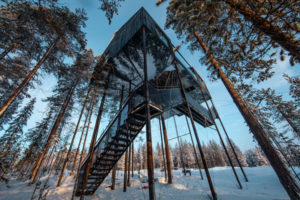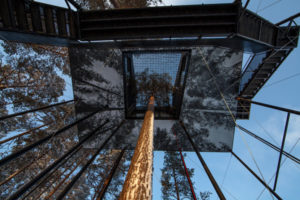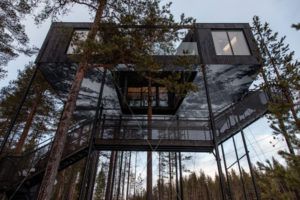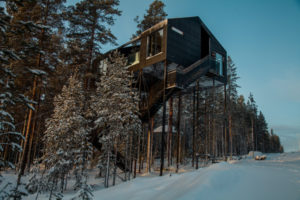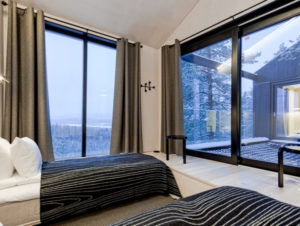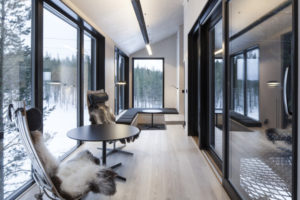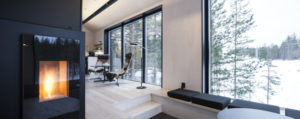|
The most popular treehouse at the moment is the last one designed by Snøhetta for the Treehotel in Sweden.
Almost all the websites have already written a lot about this treehouse. For this reason I wanted to do something different, not to explain my opinion about this project and neither simply to describe it.

I had the opportunity to interview Snøhetta‘s office in Oslo who designed the 7 th Room, to know every secret about it! I hope you enjoy it!
Which was your approach for this kind of project since it’s a very special one?
The client, Treehotel, already has 6 tree houses, and the program was clear that they wanted 2 bed rooms, a “balcony”, bathroom and a northern light lounge. We designed the projects by defining the forest as the most important feature and started to design from the inside to the outside. We wanted to make a comfortable, inviting indoor experience where the site location in the treetops is the radical move. The cabin itself is a “traditional” wooden Scandinavian cabin that is oriented around one pine tree.
Which are the limits of building above the ground instead of a “normal” building and how the trees contribute to the treehouse design?
There were no direct limits, except the program and a very fast design and building process. The trees contribute by being the forest, and we did the opposite of the other treehouses that all are structurally attached to the trees, and we wanted to leave the trees as they are.
Why did you decide to use pilotes instead of anchoring the house at the trees?
We wanted to lift the cabin up into the tree crowns, and therefore we lifted the building 10m above ground. The cabin does not structurally relate to the trees, but has 12 columns, each 140mm in diameter.
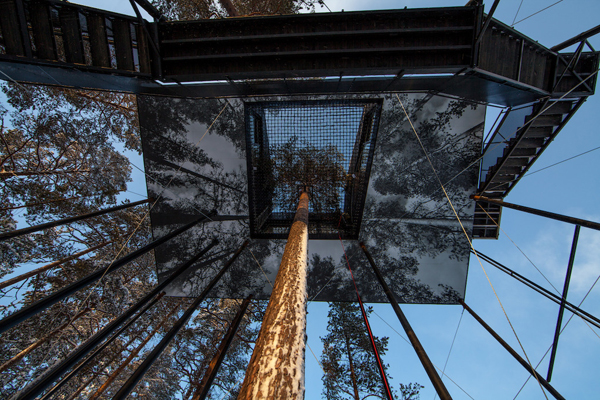
Why do you think people are so fascinated by treehouses? How would you explain this phenomenon?
Many has a fascination for treehouses. It often starts when you are a child, and maybe get the opportunity to build your first tree house, a hideaway, a secret place, and important: lifted from the ground. This lift makes a big difference, and can also be a way to feel closer to nature.
What do you think people can find in the trees that they can’t find on the ground?Calmness, peace and a different view, suddenly you see everything from a different angle! And maybe even feel that you are part of nature.
Was this your first treehouse or have you already built other ones?
First one, hopefully not the last one!
A lot of people think that building a treehouse it’s just fun and not a real job. I don’t agree, you? What would you say to these people?
A treehouse is a lot of fun, but it does not mean it’s not a real job. We created a “classic” Scandinavian cabin, which happens to be in the treetops.
From what have you been influenced designing this treehouse?
The existing forest and the pine tree that grows through the “balcony net”. The 6th façade that is a memory of the existing forest, is placed on the underside of the cabin, to make it disappear from below and also reflect on the forest. The view in the tree crowns and the waste view you get when you get high up has been very inspiring and also the possibility to see northern light, wild life and tree tops!
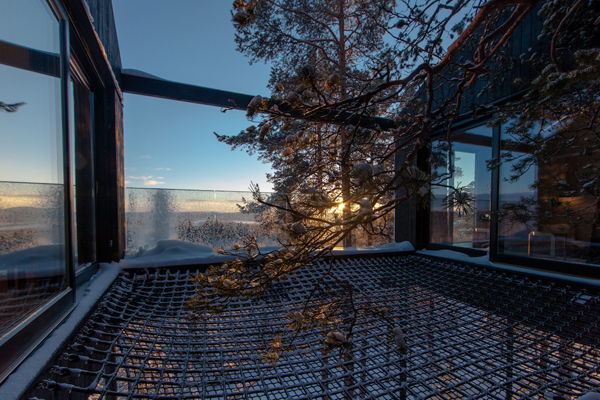
Some questions from the Hometreehome readers:
This new approach that you developed to design this treehouse, will you use it also for your future project?
Yes, the 7th room has been very inspiring to work with and a very fast process. Local people have been very involved and really wanted to take part of the process and the ownership to the project has been grounded in all the engaged people. The 7th room is very site specific and built on the site and lifted up. We have tested out interesting new solutions that we will bring in to new projects and challenge us self to push it further.
Why have you preferred ma technological treehouse using new materials instead of using traditional ones like using just wood? Are any technological elements or domotics present? Have you used wood for the structure? If yes, which kind of wood?
The cabin is made of wood, burnt pine wood on the facades, birch plywood for ceiling and walls and ash planks for flooring. The structure is based on 12 steel columns – only 140mm in diameter and a steal frame is the beam in the bottom of the cabin. If we were to use wooden columns, they would have been massive, and we wanted the tree trunks to stand alone, and show that the cabin was standing on “its own” structure and leave the trees in the forest as they are.

I would like to thank the Snøhetta ‘s team for its precious time to answer my questions, as architect and your fan it has been a very big pleasure. I hope to see more treehouses from you!
More pictures in the gallery below.
Pics by Johan Jansson of Snøhetta. All rights reserved.
Tags: 7th room, architecture, bioarchitecture, cabin, cabinporn, eco friendly, ecoarchitecture, green architecture, hometreehome, nature, norway, oslo, Snøhetta, sweden, tree, treehotel, treehouse, treehouse lovers, treehouseporn, what's new
|






